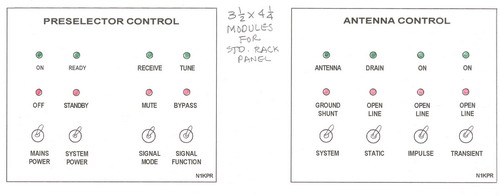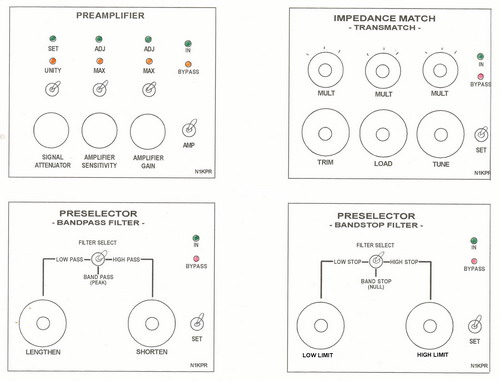evolution has brought us to this.
Preselector Control: is pretty self-explanatory. It allows the entire system to be bypassed for comparison purposes or when not needed. Signal Mode grounds all RF activity and thus provides an RF-Mute. The Antenna module provides various level and functions of static protection utilizing, bleed resistors, Neon bulb discharge, MOV supression and other forms of Transorbs. The Preamp has an attenuator, an input level control to preclude overload/intermod, and an actual gain control. The Transmatch is either a "T" or "Pi" filter which can tame any "wild" antenna impedance -- more for the experimenter than the active listener.


What is still missing here is a control in the middle of these two units, marked "Bandwidth." It would be a simple matter to take advantage of the internal impedance of the circuit and provide a continuously variable bandwidth control to the "peak" and "notch" functions. I have tried this, but I still haven't convinced myself of the utility or practicaltiy of that function (see the response curves on page 1).
